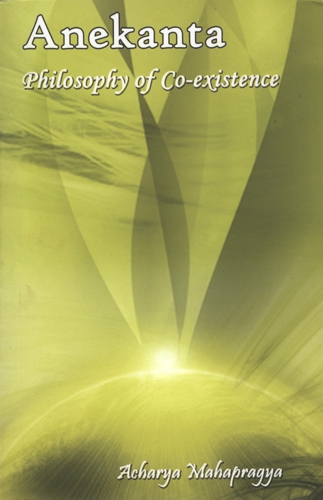Chapter 5

The Axioms of Anekānta
Key-Words
Anyatva | - | Pervasiveness |
Dhruvatva | - | Permanence |
Ekatva | - | Experience of unity |
Hinayāna | - | A branch of Buddhist Community |
Jin | - | Omniscient |
Jīva | - | The soul |
Naya | - | A particular viewpoint |
Paratantra | - | Independent |
Parikalpita | - | The imaginary |
Parinispanna | - | The ultimate |
Prakrti | - | The primordial matter |
Puruṣa | - | The sentient element |
Sarvam Asti | - | Everything exists |
Sarvam Nāsti | - | Nothing exists |
Tiryag | - | The horizontal |
Ūrdhva | - | The vertical |
Vyañjanaparyāya | - | The prolonged modality |
Anekānta is the most comprehensive principle that determined the nature of Jaina thought in all its branches, social ethical, psychological onto-logical, and metaphysical and the like. The concomitance between generic and non-generic, existence and non-existence, speakable and unspeakable, being and non-being, permanent and impermanent, identity and difference of substance and modes, one and many are the main axioms of Anekānta. In Jain philosophy these axioms were very important and fully exploited in the solution of logical problems. Many Jain philosophers discussed the problem of valid knowledge in the light of Anekānta. Its importance has enhanced as a criterion of the investigation of the nature of logic-epistemological tools. |
The Axioms of Anekānta
We can know the truth and also express it. It consists in the trio of entity, word and knowledge. Different philosophies have looked at the problem from different angles of vision. The Vedānta has explained the problem from three standpoints - the ultimate, the empirical and the apparent. The Brahman is the ultimate truth, while the sensuous world has only empirical validity. The cognition of the 'will-o' the wisp and dream is pure appearance. In Hinayāna Buddhism the truth is twofold, viz. the ultimate and the conventional, while in the idealist Buddhism it is threefold, viz. the ultimate (parinispanna), the dependent (paratantra) and the imaginary (parikalpita). The self-nature (momentariness) of the object is the ultimate truth. The universal nature is only a conventional truth on account of its being a product of the intellectual function of exclusion.
Different thinkers have presented the different aspects of truth in their own way. The foundation-stone of such presentation is twofold-intuitive experience and rational knowledge. In intuitive experience the object is known directly and, therefore, there is no difference in such experience. The rational knowledge that occurs at the sensual level does not cognize the object directly and this is the reason why there are varieties in such cognitions. The Vedānta rejected the modes as unreal while accepting the substance alone as ultimately true. The Buddhist, on the other hand, rejected the substance as imaginary by accepting the element of the modes. According to Jaina logic, both the substance and the modes are ultimately true. When the substance hidden under the waves of modes has no appeal, the modes come up prominently at the cost of the substance which lies submerged under them. When the modes, like waves, lose their identity in the calmness of the unfathomed ocean of substance, the latter alone appears to be ultimately real. The Vedāntic monism is like the waveless ocean and the Buddhist phenomenal is the state of the ocean agitated by waves. Non-absolutism appropriates them both, as so finely expressed in the following beautiful verse -
Aparyayam vastu samasyamānama -
dravyametacca vivicyamānam,
Ādeśabhedodit -saptabhanga -
madidrśastvam budhrūpavedyam.
From the synthetic view-point the object is without modes and from the analytic standpoint it is unsubstantial. "You have realized. Oh Lord, the truth in its sevenfold aspects on account of sevenfold viewpoints, that reveals itself only to the Wise."
The substance presents itself when our thinking is synthetic, losing all its modes and when our approach is analytical, the modes become prominent at the cost of the substance. In the formative period on anekānta some principles of logical concomitance were discovered and that constituted an epoch-making achievement of that age.
 Acharya Mahaprajna
Acharya Mahaprajna

